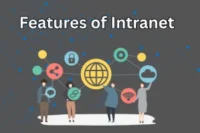What is Edge Computing? Definition, Benefits, Challenges & Future Trends
Published: 21 Sep 2025
In today’s digital world, data is being created at an incredible speed. From IoT devices and smart cities to self-driving cars and live video streaming, the demand for fast, low-latency data processing is higher than ever. Traditional cloud computing often struggles to handle this, since data has to travel long distances to central data centers. This is where edge computing comes in.
By moving processing and storage closer to where the data is generated, edge computing makes systems faster, reduces bandwidth use, and improves reliability.
In this article, we’ll explain what Edge computing is, how it works, its benefits and challenges, real-world applications, and the key trends shaping its future.
Edge Computing
Edge computing is a distributed computing model that processes data closer to where it is generated at the “edge” of the network rather than relying solely on centralized cloud servers. This approach reduces latency, improves performance, and supports real-time decision-making.
Unlike cloud computing, where data travels to large, centralized data centers, edge computing decentralizes processing by placing it near users, devices, or local servers. This is especially critical for industries where milliseconds can make the difference, such as autonomous driving, financial transactions, or healthcare monitoring.
It’s also important to distinguish edge computing from related concepts:
- Fog computing: A middle layer between the edge and cloud, where intermediate nodes handle part of the processing.
- Cloud computing: Centralized storage and computing power in large data centers.
- Hybrid models: A combination of edge and cloud for flexibility and scalability.
How Edge Computing Works (Architecture & Components)
Edge computing architecture is built around several key components:
- Edge Devices – Sensors, IoT gadgets, smartphones, or machines that generate data.
- Edge Nodes/Gateways – Local servers or devices that process data near the source.
- Connectivity Layer – Networks such as 5G, Wi-Fi, or fiber optic connections that enable communication between devices and nodes.
- Cloud Integration – While critical processing happens at the edge, the cloud still plays a role in large-scale analytics, long-term storage, and global coordination.
The workflow typically follows this path:
Data is collected → filtered and processed locally → only relevant insights are sent to the cloud for deeper analysis or storage.
This reduces bandwidth usage while ensuring critical operations happen in real time.
Why Edge Computing Is Important
Edge computing is not just a technical upgrade it’s a strategic necessity in a data-driven world. Here are the key drivers behind its growing adoption:
- Reduced Latency: Data processing near the source enables faster decision-making.
- Bandwidth Optimization: Only essential data is sent to the cloud, saving costs.
- Data Privacy & Compliance: Sensitive data can be processed locally, ensuring compliance with regulations like GDPR or HIPAA.
- Reliability: Edge systems can continue operating even if connectivity to the central cloud is disrupted.
- Support for Emerging Technologies: IoT, AI, VR/AR, and autonomous vehicles all require the speed and efficiency edge computing provides.
Challenges & Trade-Offs
Despite its benefits, edge computing introduces new complexities:
- Security Risks: More devices at the edge increase the potential attack surface.
- Hardware Limitations: Edge nodes often have limited power and storage compared to cloud data centers.
- Connectivity Issues: In remote areas, unstable connections can hinder performance.
- Management Complexity: Monitoring, updating, and maintaining thousands of distributed nodes can be challenging.
- Data Governance: Ensuring compliance across multiple jurisdictions requires careful planning.
Organizations must weigh these trade-offs before large-scale adoption.
Use Cases & Real-World Applications
Edge computing is already transforming industries worldwide. Notable applications include:
- Industrial IoT: Manufacturing plants use sensors and edge analytics to optimize production lines and predictive maintenance.
- Autonomous Vehicles: Cars process sensor data locally for split-second navigation decisions.
- Smart Cities: Traffic lights, surveillance systems, and utilities use edge computing for efficiency and safety.
- Healthcare: Patient monitoring devices analyze vital signs in real time and alert healthcare providers instantly.
- Retail: Stores leverage edge analytics for personalized recommendations, real-time inventory updates, and better customer experiences.
- Content Delivery Networks (CDNs): Video streaming platforms cache data at edge servers to reduce buffering and improve quality.
Edge vs. Cloud vs. Fog: Key Differences
- Cloud Computing: Centralized, scalable, and cost-efficient but can suffer from latency.
- Fog Computing: A distributed layer that processes data between the edge and cloud.
- Edge Computing: Focused on ultra-low latency and local processing, essential for real-time applications.
In practice, businesses rarely rely on just one. Instead, they often adopt hybrid models blending edge vs. cloud computing (and sometimes fog) to achieve the best balance of speed, scalability, and efficiency.
Best Practices for Implementing Edge Computing
For organizations considering edge adoption, here are some best practices:
- Define Clear Objectives – Focus on business needs, not just technology.
- Select the Right Infrastructure – Choose devices, gateways, and servers suited to your workloads.
- Prioritize Security – Implement strong encryption, endpoint protection, and access controls.
- Plan for Scalability – Ensure your system can grow with increasing data volumes.
- Enable Remote Management – Use tools for monitoring, updating, and troubleshooting edge nodes.
- Ensure Compliance – Design with regulatory and industry standards in mind.
Future Trends in Edge Computing
The future of edge computing looks promising, with several trends shaping its evolution:
- 5G and Beyond: Ultra-fast, low-latency networks will accelerate edge adoption.
- AI at the Edge (Edge AI): Running machine learning models directly on edge devices for instant insights.
- Serverless at the Edge: Functions running closer to users, enabling real-time web apps and services.
- Stronger Data Governance: Regulations will influence how and where data is processed.
- Standardization & Ecosystems: Vendors and industry groups are building frameworks for interoperability and scalability.
Conclusion
So guys, in this article, we’ve covered Edge computing in detail. Edge computing is redefining how organizations process and manage data by bringing computation closer to the source. It reduces latency, saves bandwidth, enhances security, and enables new possibilities in IoT, AI, and digital services.
At the same time, it introduces challenges in management, security, and compliance that must be carefully addressed. The future lies in hybrid models that combine the scalability of the cloud with the speed of the edge. If your business relies on real-time data, now is the perfect time to explore edge computing and prepare for the future of digital innovation.
🚀 What do you think about edge computing? Let us know in the comments!
FAQs
The following are some common questions and answers to help you better understand edge computing.
Edge computing means processing data closer to where it’s created instead of sending it to a faraway data center. This makes responses faster and reduces internet usage. Think of it as having a “mini cloud” right next to your devices.
Cloud computing relies on large, centralized data centers, while edge computing processes data locally near the source. Edge is better for real-time tasks because it reduces delays. However, the cloud is still useful for big storage and complex analysis.
Because we use more smart devices, video apps, and IoT systems, quick data processing is essential. Edge computing ensures low latency, saves bandwidth, and improves reliability. It makes modern technologies work smoothly without constant reliance on the cloud.
Edge computing is used in self-driving cars, smart traffic lights, factory machines, healthcare monitoring devices, and video streaming platforms. These systems need instant data processing to function properly. Without edge, they would face delays that could cause problems.
Edge computing can improve privacy by keeping sensitive data local, but it also creates new security risks. More devices at the edge mean more potential entry points for hackers. Strong encryption, regular updates, and monitoring are important to keep systems safe.
No, edge computing does not replace the cloud it complements it. The cloud is still needed for large-scale storage and advanced analytics. Edge is best for real-time tasks, while cloud handles long-term and complex workloads.
IoT devices generate huge amounts of data, and edge computing helps process it locally. This reduces delays and prevents overload on networks. It makes IoT devices smarter and more efficient.
Industries like healthcare, manufacturing, transportation, retail, and telecommunications use edge computing heavily. It helps improve speed, efficiency, and safety in their operations. Any industry that relies on real-time data can benefit.
The future includes faster networks like 5G, smarter AI models running at the edge, and hybrid systems that mix cloud and edge. Businesses will rely more on distributed computing for speed and reliability. As technology grows, edge will become a key part of digital innovation.

- Be Respectful
- Stay Relevant
- Stay Positive
- True Feedback
- Encourage Discussion
- Avoid Spamming
- No Fake News
- Don't Copy-Paste
- No Personal Attacks

- Be Respectful
- Stay Relevant
- Stay Positive
- True Feedback
- Encourage Discussion
- Avoid Spamming
- No Fake News
- Don't Copy-Paste
- No Personal Attacks





